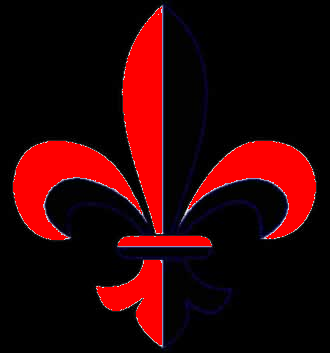The facts of his life are well known. Haile Selassie's influence on the world is hismost enduring legacy. Born Tafari Makonnen in 1891, Haile Selassie came to be identified inextricably with Ethiopia. Only rarely in the modern world does the story of a man become so closely linked to the story of a nation. It is said that great events beget great men, but they beget failures as well, and the boundary between the two is often defined by singular acts of courage. These the Ethiopian Emperor did not lack.
Not surprisingly, the fortitude of the man sometimes referred to as "The Lion" inspired Nelson Mandela, Martin Luther King and even Malcom X, each of whom corresponded with Haile Selassie who advocated civil disobedience when it was necessary to remedy fundamental social injustice or restore freedom to the oppressed.
The Emperor's presence at President Kennedy's funeral is still remembered. It seems somehow appropriate that the motion picture Born Free was filmed in Ethiopia during Haile Selassie's reign.
One speaks of leaders of men as though their public lives were completely divorced from their private ones. For a hereditary monarch, this should not be the case. What his children think of him is as important as what everybody else thinks. Haile Selassie was a devoted husband and father. His wife, Empress Menen, died in 1962. His sons, Sahle Selassie, Makonnen, and Asfa Wossen, had a great sense of duty to their father and to their people. Of his daughters, Princess Tenagne, in particular, excercised various official duties.
Haile Selassie ascended the throne in theera of polar exploration and slow communication. Africa's oldest nation was little more than a footnote to the great stories of the day --something that Americans and Brits read about in the pages of the National Geographic. Some people still called the country Abyssinia. In certain countries far beyond Ethiopia's borders, segregation and apartheid were long established and little questioned. Most other African "nations" were colonies. Even at home, slavery was technically still legal.
In such an era, words like "pan-Africanism" and "civil rights" were little more than esoteric philosophical notions entertained by an enlightened few. That a country as backward as Italy, whose widespread poverty prompted the emigration of millions, would seek to devour a nation like Ethiopia, was an irony too subtle to raise eyebrows outside the most sophisticated intellectual circles. With British backing, Haile Selassie returned to defeat the Italian army which, in the event, the Allies never viewed as much more than a nuisance.
The British themselves considered the Ethiopian campaign in its strategic context --as a way to free the Red Sea from possible Axis control-- as much as the liberation of a sovereign nation. To the Ethiopians, it was as much a moral victory as a military one.
The Emperor's speech to the League of Nations denouncing the Italian invasion is remembered more than the aggression itself. It prompted essentially ineffectual international trade sanctions against a European nation but, like the Battle of Adwa four decades earlier, represented in a tangible way one of the few occasions in the modern era that an African nation defied the arrogance of a European one.
There were very few world leaders of the post-war era who had actually led troops in combat. Haile Selassie and Dwight Eisenhower were exceptional in this respect, which partially accounts for their close friendship.
Even when the foe is truly formidable, courage has a psychological side that has little to do with combat or physical victory. One may seem defeated materially without being defeated morally. Perhaps it's a question of confidence, values or knowledge. Haile Selassie's greatest strength was as a builder of bridges --across rivers but also between cultures. His travels took him to many countries, and he became one of the most popular heads of state, and one of the most decorated men in the world.
It was during one such voyage, in 1960, that he had to rush home to confront an attempted overthrow of the existing order. This perhaps served as a reminder that the most dangerous revolutions are found in one's own house. The sovereign who was once known as a reformer now found himself resented by many members of the very social class his economic and educational policies had helped to create. Internationally, however, his prestige did not suffer. The Emperor established the Organisation of African Unity (OAU) in 1963, with a headquarters in Addis Ababa.
The revolution of 1974 was supported by outside forces, and while its roots were domestic, its covert objectives cannot be said to have been supported by more than a small fraction of Ethiopians. Truth be told, administrative practices which worked well in 1950 were terribly inefficient by the 1970s, and a series of problems were cited as a pretext for a full scale coup d'etat. Ethiopia's pre-industrial economy was no better prepared for Marxism than Russia's had been in 1917.
Communism's ultimate social and economic failure, in Ethiopia as well as in Russia, certainly indicates democracy's superiority, whether that democracy is embodied by a republic or a constitutional monarchy. The Derg's alliance with the Soviet Union made Ethiopia the instrument of a foreign power, precisely the thing Haile Selassie resisted.
He had a Solomonic pedigree, but Haile Selassie was a man of the people. Perhaps that's how he should be remembered.
Source
